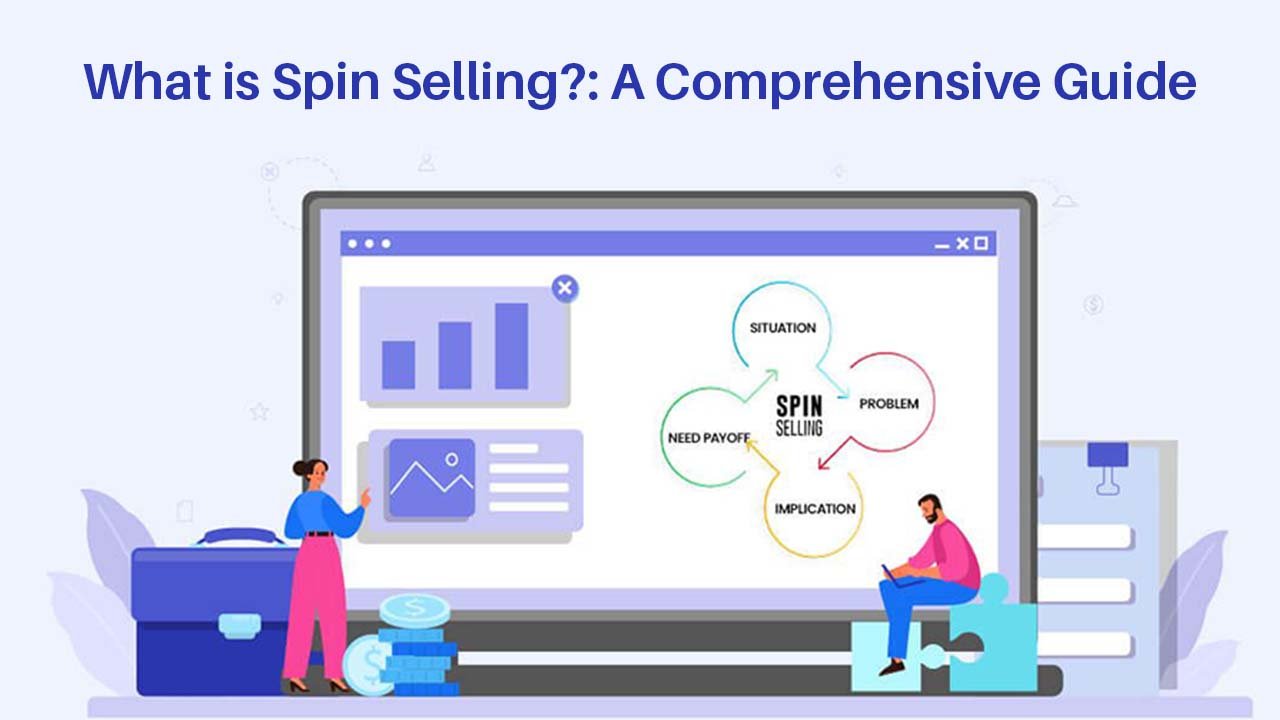The object of sale is not to just sell the product or service; it is about building a relationship with the client for the long term. In B2B scenarios, SPIN sales are a very common practice. Mastering SPIN sales means boosting your everyday sales calls to foster long lasting relationships and bring home tangible outcomes.
The business of sales is a dynamic ever changing world, and your sales handbook needs to be adapted accordingly. The approaches might evolve, but the foundations remain solid, and you can always rely on the basic principles to help you along. SPIN sales are one such research backed foundation which will help you through the tough and long drawn sales cycles. Though the methodology is more than 35 years old, most big companies still use SPIN selling even today.
The origination of SPIN selling
B2B sales are different from your usual B2C sales. B2B customers expect their sales reps to have a detailed understanding of their business and expect solutions tailored to them.
It is a process designed to help the salesperson or team understand the client’s needs and desires better and then present the product in such a convincing way that it seems like the viable solution to the challenges. SPIN selling can be easily used with other sales methodologies too.
SPIN selling has been successfully used by businesses for about 35 years now. In a nutshell, it is about asking the right questions in every step of the way to closing the sale. Introduced by Neil Rackham, SPIN acronym stands for
S = Situation
P = Problem
I = Implication
N = Need-Payoff
Each of these plays a pivotal role in the sales process. Neil Rackham advocated playing the role of adviser for the prospect. He analysed data spanning 12 years with over 35,000 sales calls by 10,000 salespersons in 23 countries. The sales were studied in great detail before defining the SPIN selling technique.
In his book on SPIN selling, he talks about how the golden rules of sales don’t work on high value products. These kinds of sales need a different approach like asking right questions and at the right time and be an active listener.
Why is SPIN selling important today?
The buyer of today does all the research and arms himself with as much information as possible before meeting the sales rep. They know that nobody can push them towards a sale, until all the doubts are cleared. Therefore, instead of doing the head push, won’t it be better if you, the sales rep, can be an advisor to the decision maker? There is no generic script for SPIN selling; rather it gives the flexibility to the salesperson to interact with the prospect at different levels.
The aim of SPIN selling is to improve conversions and ultimately generate more revenues that match the target. Hence, the script varies with every prospect, depending on the need. There can be list of standard questions to ask, but they are framed by the sales team in such a way that the answer is valuable enough to entice a sale.
How does SPIN selling work?
The basics of a SPIN sell are to learn as much about the prospect as you can and then list some unique questions to ask at different selling stages. Learning more about the customers will help you
- Understand their main needs.
- Figure out how and who makes the major buying decision and what is the overall buying process.
- Build creditability and trust, even in complex sales.
Stages of SPIN selling

There are four stages of SPIN
- Preliminaries
This stage is dedicated to building trust and establishing a rapport with the prospect. Casual conversations are a good way to start and then move to the hard pitch. Ask as many open-ended questions as you can and get to know about them and their needs.
- Investigating
In this stage, gain insights into the business. Ask about the company, the policy, the challenges they face, and any concerns they would like to address. Don’t make assumptions, patiently gain insights into the opportunities that are available for your product. Help the buyer diagnose their own problem rather than you defining for them.
- Demonstrating capabilities
This is a very crucial step when you introduce your product. You can do so by explaining either the features, advantages, or benefits of the product. Features help highlight what your product does, advantages bring out the benefits to the customer, and benefits point out to the outcomes of features and advantages. This is the stage where you show how your product is the solution to the demands that the customer listed.
- Obtaining commitment
The last stage. There are two ends to it, either the sale is done or the prospect says they are not interested in the offer. In large B2B transaction, this stage can have lasting ramifications for the future of the business. This is the stage when you can also decide if you need to take a different path with the client and offer a modified solution. You can also ask for the next step specifically, such as the amount of order, the time of order etc.
The famous SPIN questions

The SPIN methodology comes in play at the investigating stage. There is no hard and fast rule of what type of questions you can ask and when, but according to the SPIN selling, you can follow the below order if you want:
- Situational questions
Brief questions that help you get to know the prospect and the current situation on their side. The questions include
What is the existing product or procedure you are using?
What tools you are using and how often you use them?
How much budget is assigned to finding the solution to the problem? And so on..
- Problem questions
Aim to find the problem and its pitfalls. Ask about how your product or service can help them solve the current problems and avoid problems in the future. Discuss the potential areas for improvement. Some examples
Are you happy with the current systems and processes?
Do you think the problem can be solved?
What is the biggest challenge that your organization is facing?
What is the top most priority?
- Implication questions
This is your chance to subtly fit in your product as the solution to prospect’s problems. The one way to do it is to focus on the impact that the difficulties have on the client’s business. Asked in a correct manner, the question can help the client figure out that the problems need immediate solutions or remediation. Your questions can create a sense of urgency, for example,
How is the problem impacting your work?
How much time and resources are being wasted on this problem?
How much does the current approach cost your business?
Has your business ever missed a deadline because of the current process or approach?
- Need-Payoff questions
Once your customer identifies the problem and how it will worsen if it is not fixed, it is time to use the need-payoff questions and get a commitment to sale. Ask them what the solution will look like, and focus on how rewarding it would be to take prompt action. With the right gentle guidance, the prospect will themselves convey the benefits of your product in their own words. For example,
Could (your product) benefit you in any way?
Do you think that fixing your issue will boost your company’s efficiency?
Would your team benefit from (your solution)?
Sales are never going to go out of style. All you need to do is to ask the right questions. Choose the questions wisely, and the client will put their trust in you.
Read Also: What Is Guerrilla Marketing? Examples and Benefits






